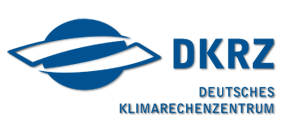|
Types of scenarios in climate research and
assessment
Emissions scenarios
Emissions scenarios describe future releases to the atmosphere
of greenhouse gases, aerosols, and other pollutants and, along
with information on land use and land cover, provide inputs to
climate models. They are based on assumptions about driving
forces such as patterns of economic, population growth, and
technology development. In addition to their use as inputs to
climate models, emissions scenarios are used in research on
mitigation. They do not track “short-term” fluctuations such as
business cycles or oil market price volatility but focus on
long-term (e.g., decades) trends.
Climate scenarios
Climate scenarios are plausible representations of future
climate conditions (temperature, precipitation, and other
aspects of climate such as extreme events). They can be produced
using a variety of approaches including analysis of
observations, models, and other techniques such as extrapolation
and expert judgment.
Environmental scenarios
These scenarios focus on changes in environmental conditions
other than climate that may occur regardless of climate change.
Such factors include water availability and quality at basin
levels (including human uses), sea level rise incorporating
geological and climate factors, characteristics of land cover
and use, and local atmospheric and other conditions affecting
air quality.
Vulnerability scenarios
Scenarios of demographic, economic, policy, cultural, and
institutional characteristics are needed for evaluating the
potential to be impacted by changes in climate as well for
examining how future patterns of economic growth and social
change affect vulnerability and the capacity to adapt. Many of
the same socioeconomic factors that affect emissions also affect
vulnerability and adaptive capacity and thus the underlying
socioeconomic modeling must be coordinated.
Narratives
While some socioeconomic factors affecting emissions and
vulnerability are modeled quantitatively, others (e.g.,
political, institutional, and cultural factors) are not
effectively quantified. For this reason, qualitative narratives
(also referred to in the literature as “storylines”) are used to
describe developments in these factors and how they could
influence future forcing, vulnerability, and responses.
Narratives can be used as the basis for quantitative scenarios.
For example, the IPCC SRES scenarios were based on a set of four
narratives that described a range of different development
pathways for the world. Narratives can also facilitate
coordination across spatial scales and substantive domains.
|
 "
"




